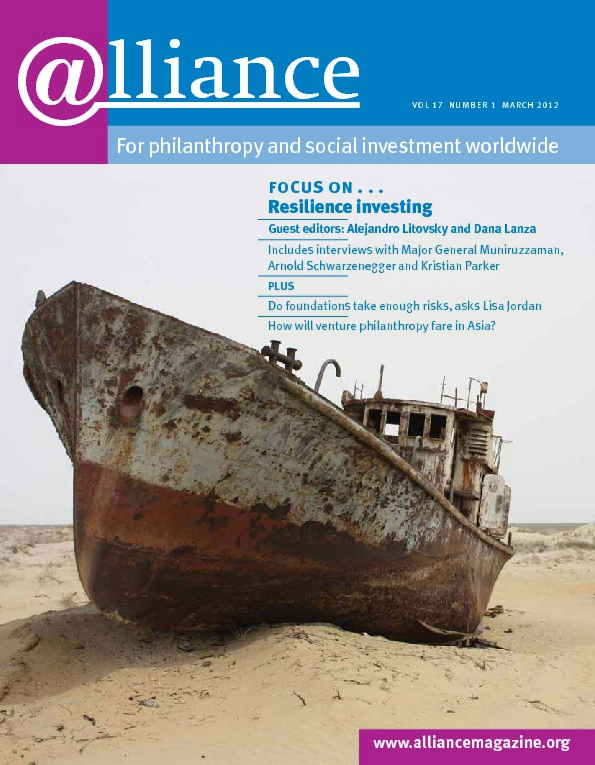Structural deficiencies in the development landscape mean that private capital is not having the impact it could on boosting sustainable development. Some intermediation functions, not unlike those played by investment banks in commercial markets, are still missing. Bringing together coalitions of actors around a tangible common purpose seems to be a promising way forward.
The Tällberg Foundation has for over 30 years worked to help foster new thinking and institutional change to meet the challenges of the day, most notably through the annual Tällberg Forum. Starting in 2008 with the global project ‘Rework the World’, the foundation has explicitly addressed the question of how to incubate development projects with a systemic design and a scale that match the urgency of the social and ecological crises and which can be commercially financed.
While there is a growing amount of private capital available for development, investment opportunities that match the dual social and ecological crises in scale and scope are not easy to find. The problem is a structural one: the lack of intermediary actors that can create new investment opportunities that meet investors’ expectations. Another side of the problem is that the big visions for change have nowhere to go.
The project ‘Rework the World’ brought together close to 150 projects with a resilience focus and looked at how these could be restructured to take significant investment. The first such success case is now approaching completion. The project is run and owned by a grassroots social movement in India, Self Employed Women’s Association (SEWA). It relies on SEWA’s unique strengths in terms of values, management and membership of 1.3 million women. SEWA has been firmly in the driver’s seat in terms of developing the details and structure of the project. The role of the Tällberg Foundation has been to incubate and nurture the grand vision, and also to act as the intermediary bringing together a coalition of partners capable of turning that vision into an investable proposition.
The SEWA Haryali project involves the sale, distribution and technical service of 200,000 efficient stoves and 200,000 solar lights. It is financed through a domestic commercial bank loan of US$14 million, repaid through micropayments and backed by a public guarantee and a buffer of carbon credits. The project is one of the largest of its kind, with significant development benefits in terms of monetary savings, increased time available for productive work, and health. One million tonnes of CO2 emissions are expected to be avoided, in addition to reductions in deforestation and black soot. Importantly, the project could be replicated in different regions and different product areas. This is where the Tällberg Foundation is now turning its attention.
Such projects do not emerge organically because they need several partners working together. In this case, IFC, the private arm of the World Bank, was engaged to structure the bank transaction and complete the legal and financial due diligence. The risk to the lending bank was reduced by 50 per cent through a risk guarantee shared between the IFC and the Dutch and Swedish development organizations, FMO and SIDA. The guarantee in turn is linked to social criteria so as to align the interests of the lending bank with the social objectives of the project. This is done through an independently developed social impact matrix. The final business plan, including IT systems, product procurement and carbon management strategies, brings all these aspects together and was produced by SEWA with hands-on support from the Tällberg Foundation.
An essential part in this process has been the intermediating role played by the Tällberg Foundation. The coordination and process management required to take an effort like this to investable proposition is too arduous for a grassroots organization like SEWA, while both donor agencies and foundations generally see it as outside their mandate. Indeed, internal regulation often requires both these kinds of actors to work only directly with the end beneficiary – in effect delaying the emergence of efficient intermediaries to bring these partners together.
From a broader perspective, therefore, the crucial lesson from the Haryali project is the impact that can be created when a consortium of complementary actors – private, public and philanthropic – is brought together around a common and tangible vision. It sets a new standard for cooperation between funding agencies and donors, and one that is crucially driven by the needs of people on the ground. A lot more can be expected to emerge from this approach.
Carl Mossfeldt is managing director of the Tällberg Foundation. Email carl.mossfeldt@tallbergfoundation.org


Comments (0)